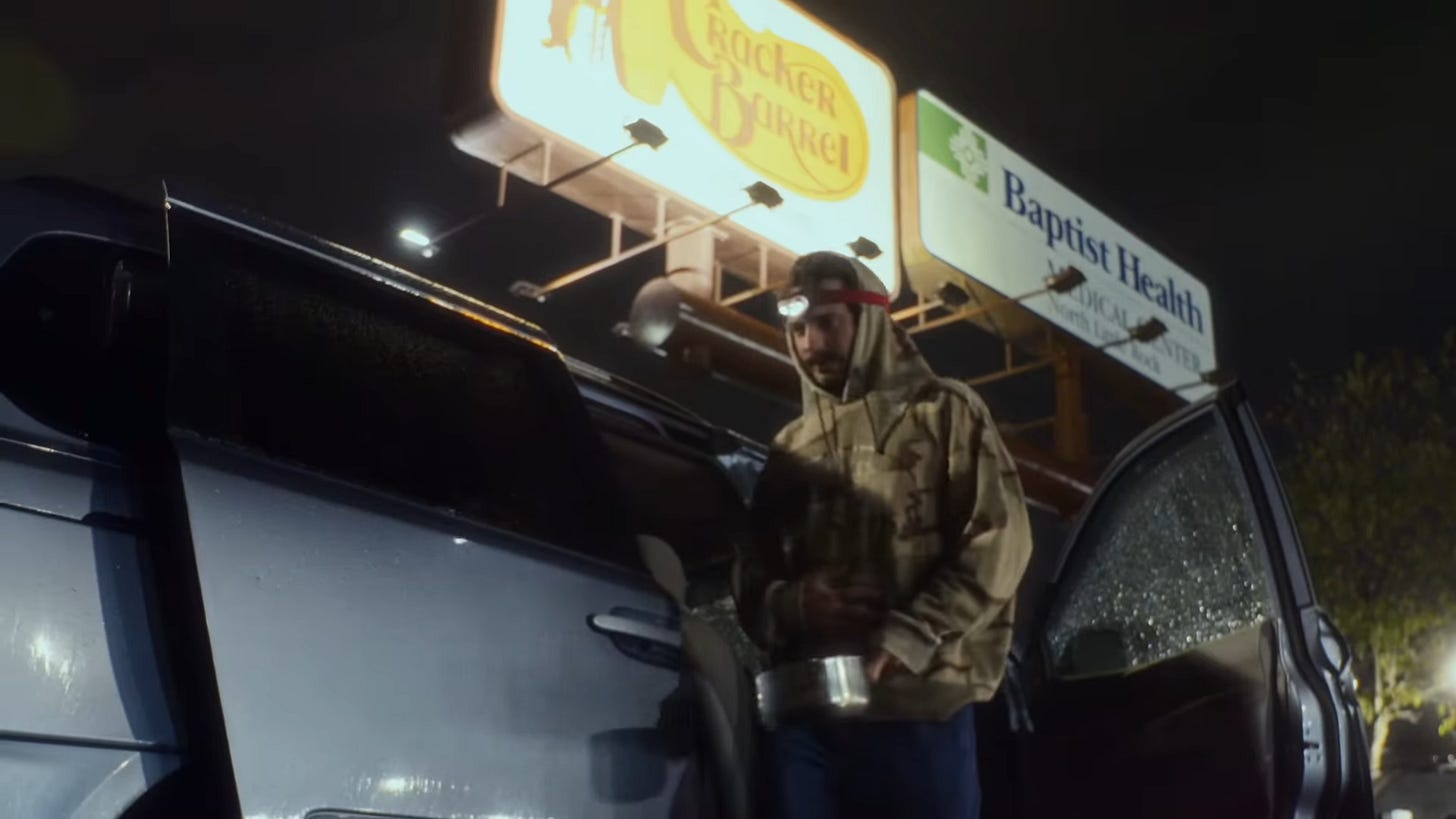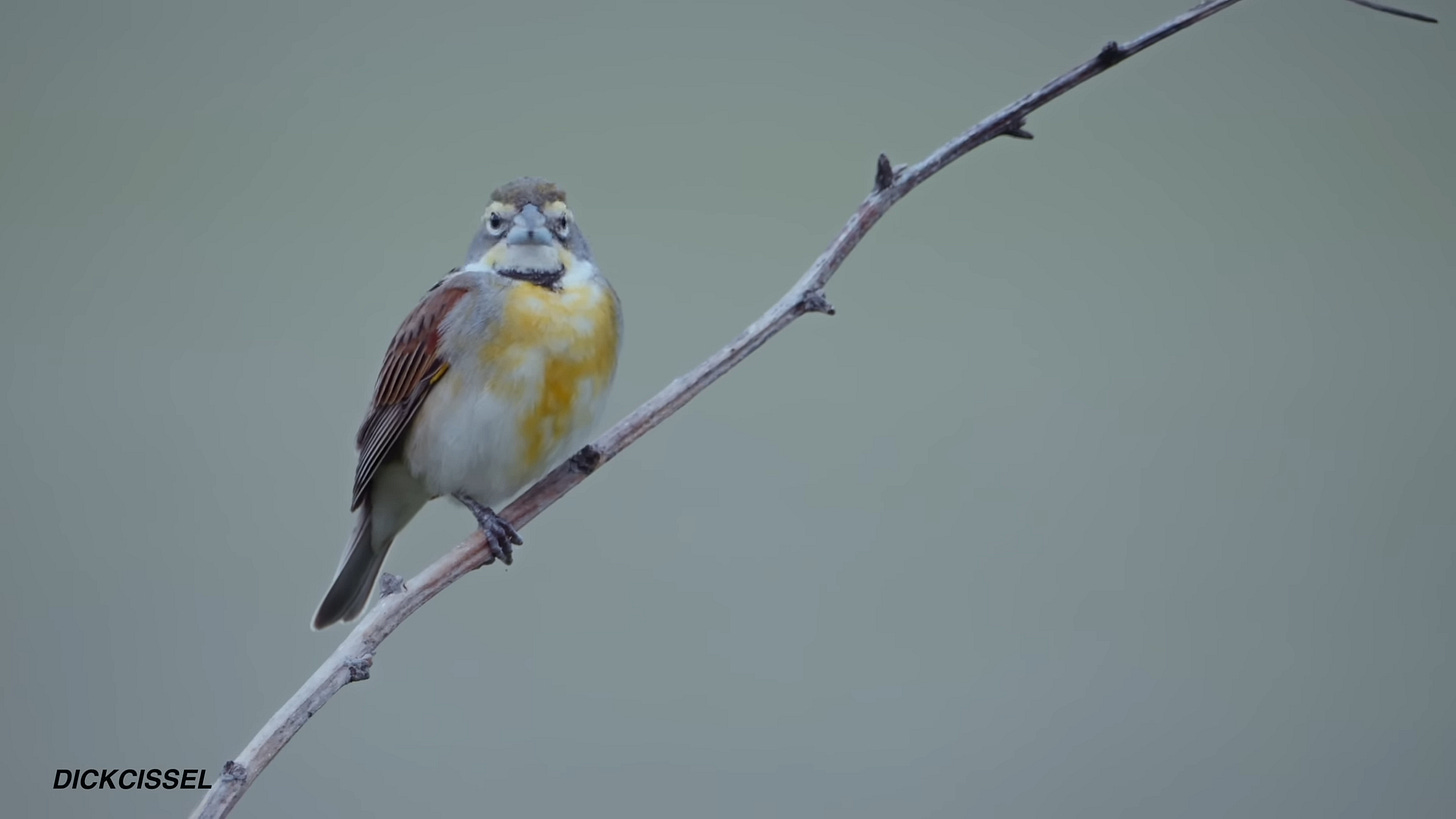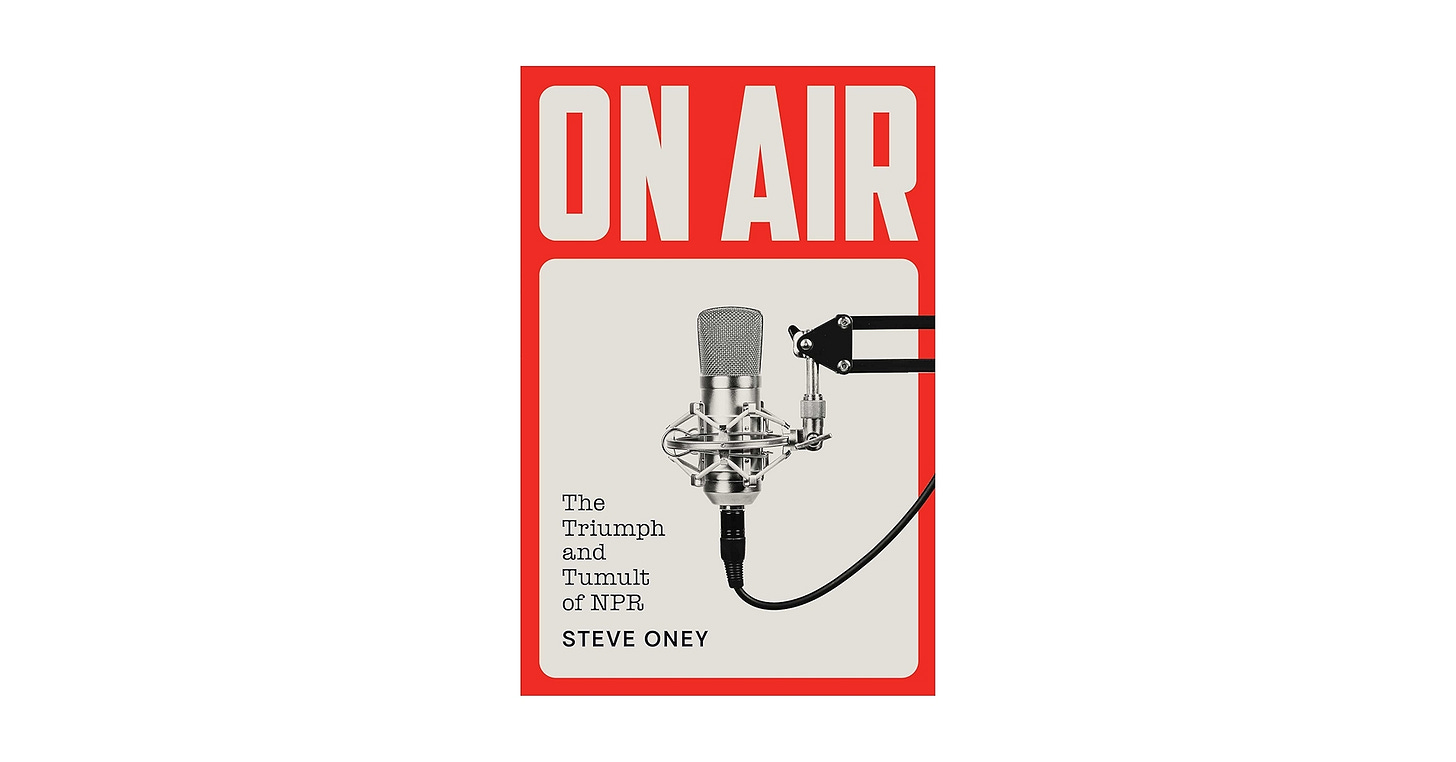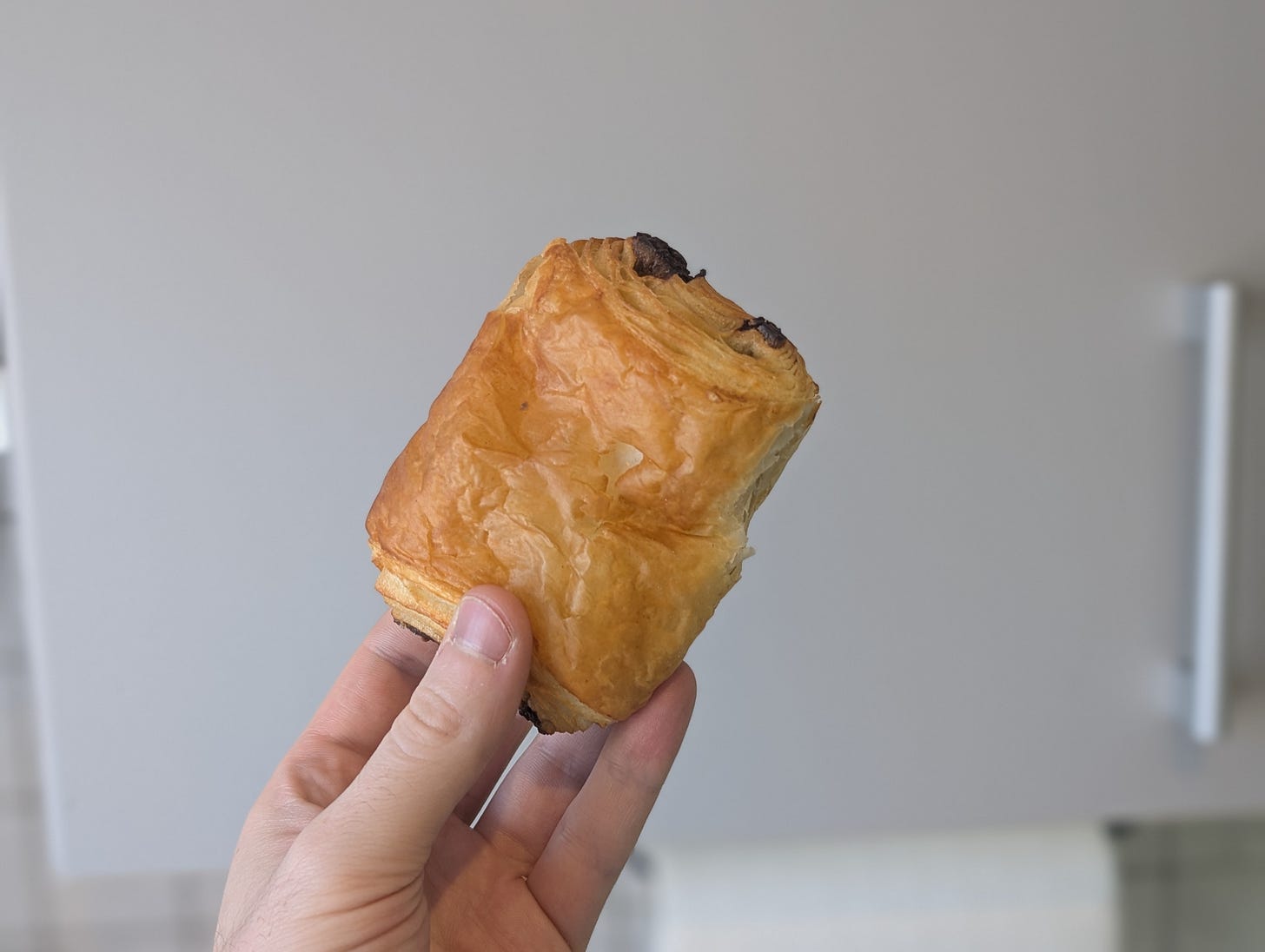For All The Birds 🦅
'Neighborhood Watch' returns

Neighbors,
Following the conclusion of Season Seven and our latest Block Party, there’s a decent amount of new faces here. The time feels ripe, therefore, for a quarterly check-in.
👋🏻 First: I’m Nate. I’m a writer and journalist who’s covered the creator world for the past five years. Every week, you can expect me to drop into your email inbox with two things:
Neighborhood Watch: On Thursdays, our staff reviews everything from a two-and-a-half-hour Minecraft simulation to a YouTube investigation regarding the true spice levels of Hot Ones’ hot sauce.
Five Things I Think (I Think): This Sunday column pulls the curtain back, revealing the conversations we’re having and cultural trends we’re tracking as we build our creative studio.
Oh, and we release a new print magazine every quarter, featuring original creator profiles, essays, photography, and artwork.
Scroll down for a new edition of Neighborhood Watch. As a comment below this week’s pick reads: “You didn’t start your day thinking you would watch a documentary about birdwatching. None of us did. It’s that good.”
— NGL
P.S. Last blog, we previewed what’s next (while celebrating the present). You can read it here.
Video: ‘LISTERS: A Glimpse Into Extreme Birdwatching’ (2025)
Creator: Owen Reiser
Runtime: 1hr 59m
Review by: Nate Graber-Lipperman
Every once in a while, a video emerges on YouTube and slowly permeates the digital zeitgeist.
First, you scroll by it on your homepage, and it keeps popping up. Huh. Never heard of that creator. Interesting thumbnail, though.
Then, your homie talks it up over lunch. Yo, did you see that one video? If YouTube+ was a thing, that right there would be a prime candidate.
Finally, one Tuesday night, you fire up the living room TV. Alright, alright—let’s see what the hype is about.
It’s a modern blend of word-of-mouth. Sure, like everything these days, this system is partly driven by algorithms. Yet the water cooler recommendation phenomenon still rings tried-and-true. And as it turns out, LISTERS, a documentary by St. Louis-based cinematographer Owen Reiser (and starring his brother, Quentin) matches the hype delivered by a friend…and then some.
In theory, the film is about the idiosyncrasies of birdwatching, a quasi-sport, quasi-hobby that took off during the pandemic due to a combination of technology (the popular Merlin Bird ID app was used by more than twelve million people in 2024 alone) and sheer boredom. In actuality, LISTERS is a road trip movie, one that follows the Brothers Reiser as they vlog their way through a “Big Year”—the term used to describe a calendar year in which birders attempt to identify as many wild species as they can.
Owen cares just as much about documenting the strange collection of passionate birders they meet (everyone from a wealthy old couple to a high school dropout) as he does their modest life passing through state lines. Early on, the Reisers depict their penchant for sleeping in Cracker Barrel parking lots, as the restaurant chain remains one of the last remaining American institutions that doesn’t consider the practice trespassing.1 It’s one of many personable moments that shine throughout the film, mixing a documentarian’s feel with a vlogger’s feeling.
Slow-motion shots of birds give way to aughts-era camcorders and stop motion, paper-and-crayon maps, the latter which inform the viewer where our protagonists are headed next. The storytelling could use more structure; about thirty minutes into the film, one does start to wonder where this is all going. Deeper messages around the role apps and gamification play in our lives, though, do eventually start to emerge.
Regardless, LISTERS thrives on energy alone. In simpler terms, the Reisers are really just a fun time. At one point, the brothers embark on a bird-watching boat tour; Quentin takes mushrooms beforehand. “The vibe here is less Animal Planet and more Harold & Kumar Go to White Castle,” Tyler Austin Harper writes in The Atlantic.
The Reisers wound up releasing a companion field guide book. They have yet to turn on ads for the film, though Owen left a comment underneath the film, accepting direct Venmo payments to support their “next project.” Following its cult-like rise on YouTube, though, the Reisers did say they’ve received pitches from “fancy executive producers” who have promised placement “on Netflix or HBO.”
Their response? Per an interview with bird conservation society Audubon:
Owen: You look more into it, and you see it’s just a slimy business. We decided to keep it on YouTube for free. I like the idea that a homeless guy can walk into a library somewhere and watch it…I like that better than some rich guy in Hollywood taking 65 percent of the sale to HBO.
Quentin: He didn’t spend a single night at a Cracker Barrel.
Owen: Yeah, he’s never even been camping in his life. He’s never shat outside. He doesn’t care about the birds.
YouTube may be going Hollywood, but creators like the Reiser Brothers are keeping the platform’s spirit alive. That, right there, is a feat worth celebrating.
Along with the birds, of course.
Nate’s Score: 4.5 / 5
Dedicated to the books, music, movies, and physical media that played a meaningful role in stopping our scroll.
Book: ‘On Air: The Triumph and Tumult of NPR’ (2025)
Author: Steve Oney
Pages: 576
NPR found itself in the spotlight this July, as the Trump Administration cut over one billion dollars in federal funding for the Corporation for Public Broadcasting—a fifty-seven-year-old nonprofit that helped support local television and radio stations across the country.
It’s not the first time NPR played a prominent role in the culture wars. In fact, in the latter half of his dishy, captivating, and exhaustively-researched history book On Air, veteran journalist Steve Oney argues that NPR has oftentimes directly contributed to the back-and-forth politicking that seemingly dominates our contemporary discourse. Sometimes, as proud flag-bearers; other times, as unfortunate scapegoats.
While we may think of NPR as a vaunted institution—at least, as a Car Talk and Wait Wait...Don’t Tell Me! kid, I did—the organization began as a collection of twenty-something-year-old outcasts and oddballs, capturing the antiwar sentiment and early-seventies voice of the baby boomers. In between recording interviews and late nights cutting tape, those journalists and producers would form factions, play internal politics, and even organize, ahem, rendezvous with one another in the edit bays.
Through conversations with former NPR staffers and execs alike, Oney snakes his way through the next forty years, leaving nary a stone unturned. He highlights the innovations in audio storytelling, how programs such as All Things Considered and Morning Edition became beloved, award-winning stalwarts decades before the term “podcast” entered the cultural lexicon. Oney also saves room for the less savory, such as NPR’s problems with building a diverse newsroom, or the variety of funding sources that kept the organization afloat over the years (one anecdote includes a charitable Chicago garbage truck magnate with questionable ties and accounting habits).
All in all, the book comes off as a little too gossipy, written as if Oney was a fly-on-the-wall of a college newspaper office. But it’s a thorough read, and a much-needed reminder for the importance of public radio at that.
Nate’s Score: 4 / 5
Food: Pain Au Chocolat (Nineteenth Century)
Creator: Viennese Bakers August Zang and Ernest Schwarzer
Picture this: You’re hankering for your morning coffee when, all of a sudden, a green mermaid enters your line of vision.
You walk in and, after sorting through Starbucks’ infamously-complicated sizing system, your order is in. “Anything else?” the barista asks.
Your eyes dart to the pastry selection—and become entranced in the chocolate croissant’s flaky gaze. You motion to it (and yes, you’d like it warm, please).
“That’ll be five dollars.”
For a croissant?! The same monthly cost as a subscription to Creator Mag, a subscription that not only unlocks four beautiful print magazines and access to our events, but supports our original, on-the-ground journalism?!?!2
The feeble American mind can therefore barely comprehend that your average grocery store pain au chocolat here in Geneva is doubly as flaky, rolled with perfection, and filled to the brim with delicious Swiss chocolate. And it only costs one franc (and change).
There’s a reason why I eat at least one of these jawns every single day when I’m visiting Vicky.
Nate’s Score: 🍫 / 5
Thanks for reading! Shoot us a reply, comment, or DM if anything resonated with you in particular—we respond to them all.
Who knew a birdwatching documentary would result in the good PR Cracker Barrel desperately needed this year?
Smooth, I know.









